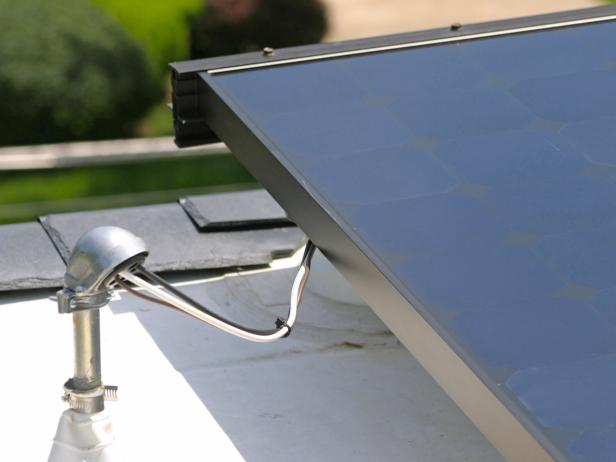
Austin has already earned the nickname “Silicon Hills” for its dense population of high-tech companies, including Dell, IBM, Advanced Micro Devices, Apple, AT&T, Flextronics, Freescale Semiconductor, National Instruments, 3M Corporation and Applied Materials. New tech startups are emerging every year thanks to UT Austin’s Austin Technology Incubator, which partners technological visionaries with capital investors. Now another new high-tech industry has arrived on the scene in Austin: solar energy.
The Booming Solar Market

For the future of solar, we’ve got the tech—it’s the economics, stupid
The fourth quarter of 2015 is on track to set records as the solar industry’s biggest quarter yet, according to the latest U.S. Solar Market Insight Report by GTM Research and the Solar Energy Industries Association. The U.S. installed 1,361 megawatts of solar photovoltaic capacity in the third quarter, marking the eighth quarter in a row the country has installed more than a gigawatt of PV capacity. Utility-scale installations are leading the way, comprising 42 percent of the national total, while residential installations are keeping pace, contributing another 41 percent and growing 69 percent year-over-year.
In addition, 30 percent of all new electric-generating capacity created in the first three quarters of 2015 came from solar. GTM Research projects this growth will continue into the fourth quarter of 2015, and cumulative national PV installations will double between the end of 2015 and the end of 2016, bringing the national total to 41 GW.
Austin is positioned to take a leading role in spurring the explosive growth of this rapidly emerging industry.
Solar Comes to Austin
Fully transparent solar cell could make every window in your house a power source
A solar storm has been quietly brewing in Austin for years. In October 2011, Austin Energy general manager Larry Weis joined a panel of utility company CEOs in Dallas at the Solar Power International, North America’s largest solar power conference. Weis and his colleagues spoke on a number of topics, with Weis raising the issue of a need for backup resources for solar power, an issue the panel concluded existing technology was already capable of addressing.
That December, Austin activated the largest solar power farm in Texas, a 30-megawatt solar farm located in Webberville. The plant, which uses 127,000 PV panels, was built by Fotowatio Renewable Ventures and overseen by the Austin branch of Colorado-based Renewable Energy Systems Americas. By January 2012, Austin Energy was receiving power generated by the new facility.
Over the next few years, under Weis’ leadership, Austin Energy emerged as a national leader in renewable energy development and energy efficiency. National observers soon noticed Austin and Texas emerging as a major solar energy market. In 2013, Ernst & Young’s Renewable Energy Country Attractiveness Index ranked Texas as the sixth most attractive state in America for solar development, identifying a driving force as the City of Austin’s energy mandate to award at least 100 megawatts of local wholesale contracts. By the first quarter of 2015, SEIA’s U.S. Solar Market Insight Report noted, Texas had installed 49 megawatts of new solar installations, with Austin leading the way, along with San Antonio and Georgetown.
Solar isn’t just for homeowners and business owners, either. Availability of solar power to renters in Austin’s green communities is increasing, thanks to community solar services. Also known as “roofless” solar programs, in these programs participating utility customers can receive electric bill credits for power generated by collectively-owned, optimally-located solar facilities, without needing to install solar panels on their own roofs.
Why Austin?

Trends In The Solar Industry: Capital Costs Drop, While Solar Companies Re-invent Themselves
Austin is optimally situated for rapid solar development. Texas has perfect conditions for solar power, SunPower CEO Tom Werner told the Houston Chronicle, with the highest power demand in the United States, high wholesale electricity prices in summer, and lots of sun. Texas has the potential to generate 7,743,000 MW of solar plants and produce 22,786,750 million kWh of electricity a year, more than any other state, according to estimates from the Department of Energy’s National Renewable Energy Laboratory.
In addition, falling prices fueled by greater solar technology efficiency are making solar an attractive option, with utility-scale solar projects producing at prices below $50 per megawatt-hour, comparable to natural gas. Commercial solar power users can further benefit from long-term contracts locking in guaranteed electricity prices for the next 20 years, insurance against rising natural gas prices.
Austin’s policies are also encouraging solar growth. The City of Austin aims to generate at least 700 megawatts of city energy from solar power by the end of the decade. Toward this end, the city has exempted solar panels from zoning height limitations, paving the way for contracts to be awarded to solar developers. Commercial users additionally benefit from federal tax credits.
Austin’s business and technology climate are also conducive to solar power development. Austin’s thriving high-tech and clean energy industries are supported by a business-friendly infrastructure, with Austin Energy boasting the country’s lowest outage frequency and duration rates.
Check out Why Austin for more reasons why Austin is the place to be for solar power companies and solar tech meetings and conventions.





